Silverado Lumberjack Boots Review | Testing the Lesser Known, USA-Made Work Boot
If you’re a working man who prefers American made work boots and you don’t want to pay an arm and a leg for quality, you’re in luck. Silverado boots might have what you’re looking for. So when I saw that they sell an American made, Goodyear welted boot for under $300, I had to grab a pair.
Who is Silverado? Silverado is a house brand of the Abilene Boot Company in Somerset, Pennsylvania. They’ve been making western-style boots in the US since 1980. They also manufactured the heritage boots for the now-defunct Mark Albert brand. So we know Abilene knows high-quality boots.
They’re not as famous as brands like Thorogood or Red Wing. So, if you don’t like that Red Wing makes most of their work boots overseas or that Thorogood mostly makes their boots overseas — bottomed in the United States but lasted in the Caribbean. (All while stitching an American flag to every boot.) Silverado is worth exploring.
They position their boots as “built the old school way, designed the new school way,” so we’ll look at how the Lumberjack work boot’s design, construction, and on-the-job performance.
Key Takeaways: Silverado Lumberjack
Our reviewer works in metal fabrication and welding. He recommends these boots for anyone looking for comfortable and durable work boots. The Made-in-the-USA Silverado Lumberjack combines traditional Goodyear welt with modern materials like poron and EVA and the option of a steel toe. The synthetic welt makes it hard to resole, but the price is appropriate. It also isn’t waterproof; if that’s important, check out Irish Setter’s Wingshooter ST.
Combing a Goodyear welt construction with modern materials like poron, EVA foam, Silverado Boots are a good balance of modern and traditional work boots.
How We Tested the Silverado Lumberjack
So, how exactly did I test these boots? By working in them. By day, I do sheet metal fabrication and welding, so I actually work in my work boots. Most importantly, I wear every work boot I review to work to ensure I can speak to their quality or comfort.

Pros and Cons: Silverado Boots Review
If you’re short on time, here is a quick pros and cons list, followed by some features and specs.
Pros
- No break-in; very squishy and comfortable
- Quality leather from Seidel in Wisconsin
- Durable, double-stitched Goodyear welt
- Multiple outsole options
- Less expensive than most USA-made boots
- Padded steel toe doesn’t dig into the big toe
- The stitched-on outsole prevents delamination at the toe
Further Reading
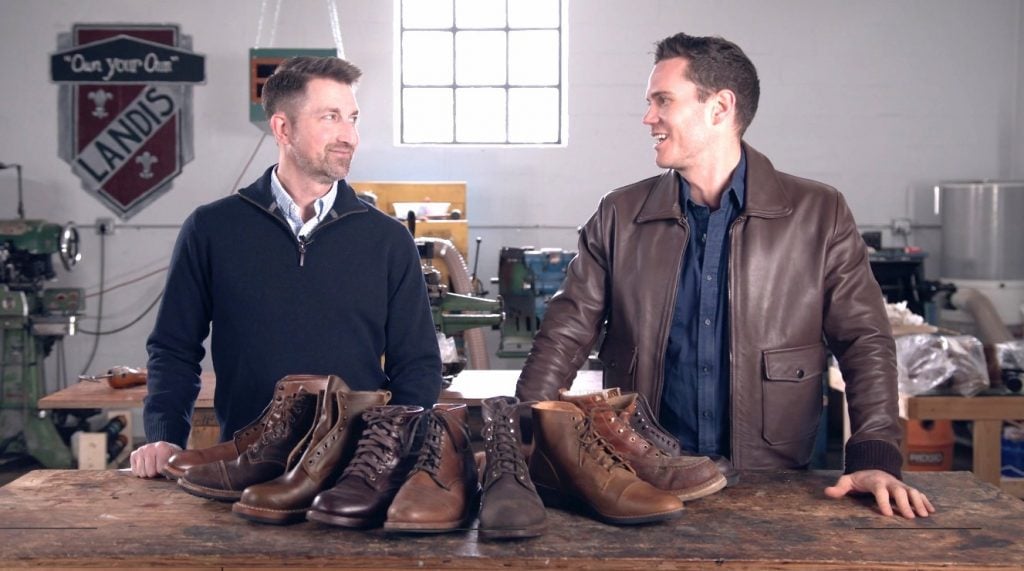
20 Best American Made Boots to Buy in 2024 (Made in USA!)
Looking for a durable, resolable, casual boot that’s made in America? We’ve put together the ultimate list to save you money and time. Check out how →
Cons
- No pull loop on the back of the boot
- The tongue could be gusseted higher for an 8-inch boot
- Synthetic welt is harder to resole (but acceptable for the price)
- No composite safety toe options, only steel
- No waterproof options
Features and Specs
| Leather | 5-6oz oil tanned leather from Seidel |
| Safety Toe | Yes, steel safety toe |
| Electrical Hazard | Yes |
| Oil & Slip Resistant | Yes |
| Waterproof | No |
| Outsole | Vibram Lug, Honey, or Wedge Sole |
| Construction | Goodyear welt construction / split reverse welt |
| Rubber Toe Guard | No |
| Shank | Yes, tempered Steel |
| Height | 8in or 6in Height |
| Country Of Origin | USA-made |
How Silverado Makes These Boots
Let’s take a look at how Silverado builds these boots and what exactly Silverado means by “Built the old school way, designed the new school way.”
The Leather
- High-quality Oil-Tanned Shipyard leather from Seidel Tannery
- Much thicker than other brands on the market, like Thorogood and Red Wing
The Silverado Lumberjack comes in what they call their Oil-Tanned Shipyard leather. Basically, it’s a tan-colored leather that is very oily. The most important thing about the leather is that Slverado sources it from US-based Seidel Tanning Corporation. Seidel makes leather for many boot makers, including Thorogood and Pacific Northwest boot makers like JK Boots, a premium brand that can cost over $500.

They get their leather from a reputable source, and it’s a good thickness. At 5 to 6 oz or 2.3 to 2.5 millimeters, it’s about the same thickness as, if not thicker than, Thorogood and Red Wing.
“I measured the leather at 2.56 millimeters thick with my calipers.”
Construction
- Synthetic Goodyear welt is not as durable or easily resoleable as leather welt
- Poron-topped fiberboard lasting board/insole for added comfort
- Abrasion-resistant and moisture-wicking lining is better than cotton
So how old school is this construction? These are Goodyear welted boots.
The Goodyear welt is an old-school construction method where the bootmaker stitches the boot’s upper (the leather) to a strip of material (the welt) and the midsole. Lastly, they glue the outsole (or, in some cases, glued, and then stitched) to the midsole.
Since the upper isn’t directly attached to the outsole, it’s easier to find a cobbler to resole these boots, unlike cheaper and more popular cemented construction. (That means the upper is stuck to the sole with glue, the way most sneakers are made.)
Leather vs. Synthetic Welts
But, it’s not as simple as that with the Silverados. When a boot is as inexpensive as the Silverado — American-made, under $300, and Goodyear welted — there’s a good chance the welt isn’t leather. This is the case for the Lumberjack. They went with a synthetic welt, which is less durable (it can crack with time), it’s harder to resole (more likely to fall apart), and it’s pretty much guaranteed that it won’t last more than one resole — if that.
Synthetic vs Cork
Another modern touch (that’s more praiseworthy) is the poron-topped fiberboard lasting board/insole, under which is a synthetic rubber material called Quiet Walk. Some might knock the boots for not having a leather insole or cork filling, but at this price point, you won’t find anything with a leather insole.
As for the cork filling, I don’t think it’s necessary with a fiberboard insole, and I don’t think cork pairs well with fiberboard. It compresses much more easily than leather and pushes a much deeper footprint into the cork, often resulting in high spots on the sides of the boot.
The synthetic rubber is much more shock-absorbant than cork would have been, plus it allows the boot to be far more flexible than any of my Goodyear welted boots.
All the boots I’ve owned with fiberboard over cork (four pairs of Thorogoods and one Wolverine 1,000 Mile) developed an annoying high spot on the outside edge of the insole. I’ve never experienced this with any of my Goodyear welted boots that had leather and cork.
So I don’t mind the lack of cork for a few reasons. First, the synthetic rubber is much more shock-absorbent than cork would have been. Plus, it allows the boot to be far more flexible than any of my Goodyear welted boots. So, I don’t think synthetic materials are a bad thing, and that’s the case with the Silverados.
But there’s a good argument against the synthetic welt if they were selling this boot for $50-100 more. Since it’s not priced like it has a leather welt, I don’t feel bamboozled.
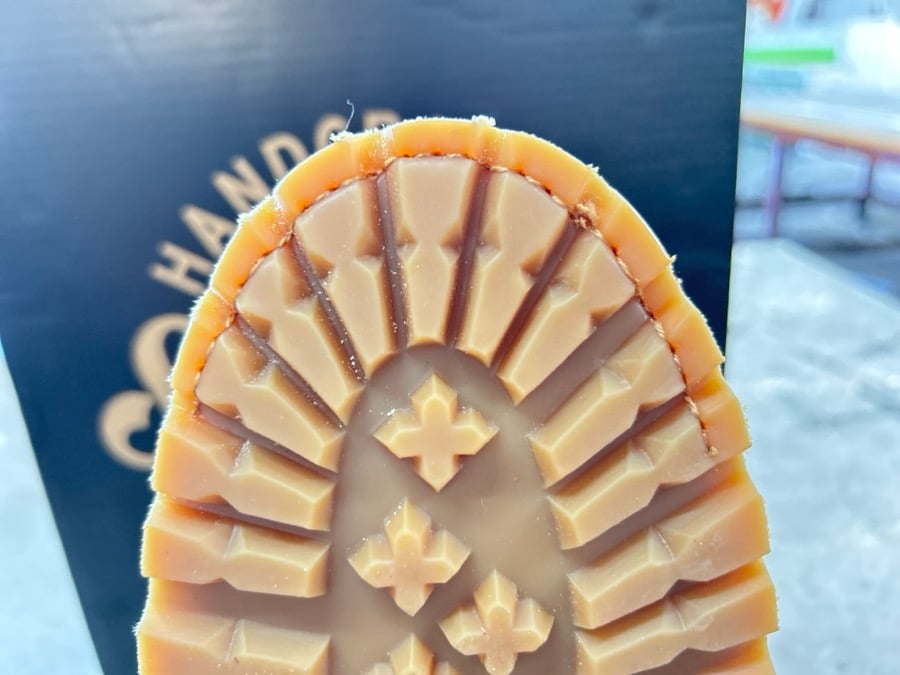
Outsole
The Lumberjack comes with three outsole options: a polyurethane wedge sole, a polyurethane and EVA combo lug sole (similar design as the Irish Setter Wingshooter), and the Vibram Honey Lug outsole. All three are made in the US.
I like the look of the Vibram honey lug, and it’s known for being softer than the black Vibram lug soles, which makes it a little more comfortable than a standard lug sole when standing on concrete floors all day.
Vibram outsoles are some of the best for work boots, so they are almost always the outsole you’ll find on a pair of $500+ Pacific Northwest work boots like Nick’s or JK.
Toe Box and Arch Support
Coming in at 4.1 inches, the toe box is very generous width-wise and allows for a more natural toe splay than other boots I’ve worn in this price range. The actual steel-toe cap is also shaped well and doesn’t push in on your big toe like some of the other safety-toe boots I’ve worn.
As far as arch support goes, I’d say it’s medium-lowish: more than my Thorogoods or Irish Setters, less than my high arch boots like the JK Forefront. An interesting element is the tempered steel shank, which is harder to break than a composite shank and less likely to bend out of shape than a regular steel shank.
Further Reading
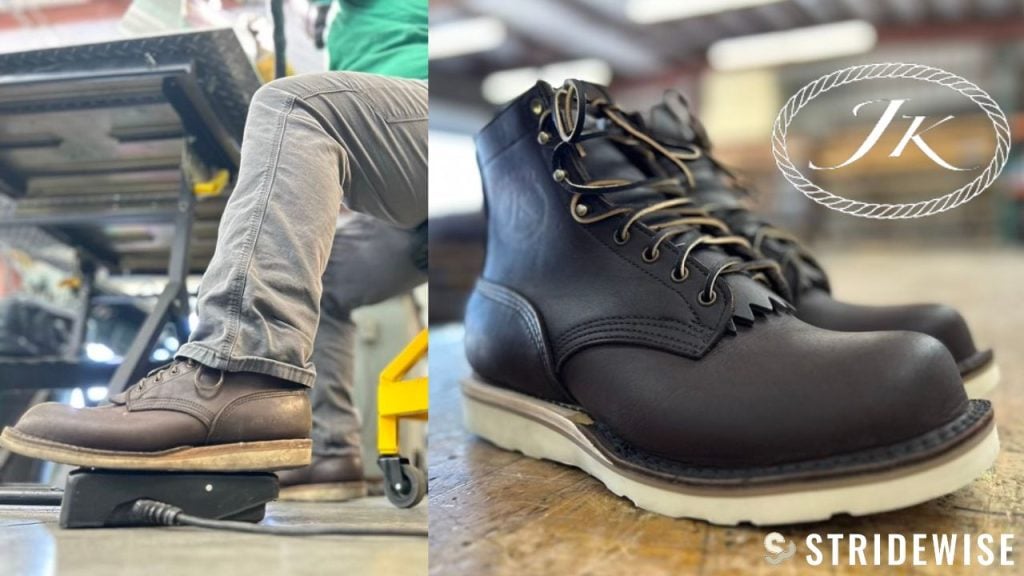
JK Boots Review | A Blue Collar Worker’s Honest Opinion
I spent one month working in JK’s Forefront boots to bring you an in-depth review testing the boots’ durability, wearability, and comfort. Read more →
Vamp Liner and Padding
Adding to the comfort is the vamp liner and padding inside the boot. The area around the steel toe is padded, which helps keep your toes comfortable. If you’ve ever worn a steel-toe boot with no padding around the safety toe, you know how annoying and painful it can be.
The vamp liner is made from a material called Dri-Brelle, a non-woven synthetic fabric that is abrasion-resistant and moisture-wicking, designed to keep your feet dry. The Dri-Brelle liner is a nice touch and much better than the cotton liner in Thorogood boots, which tends to fall apart.
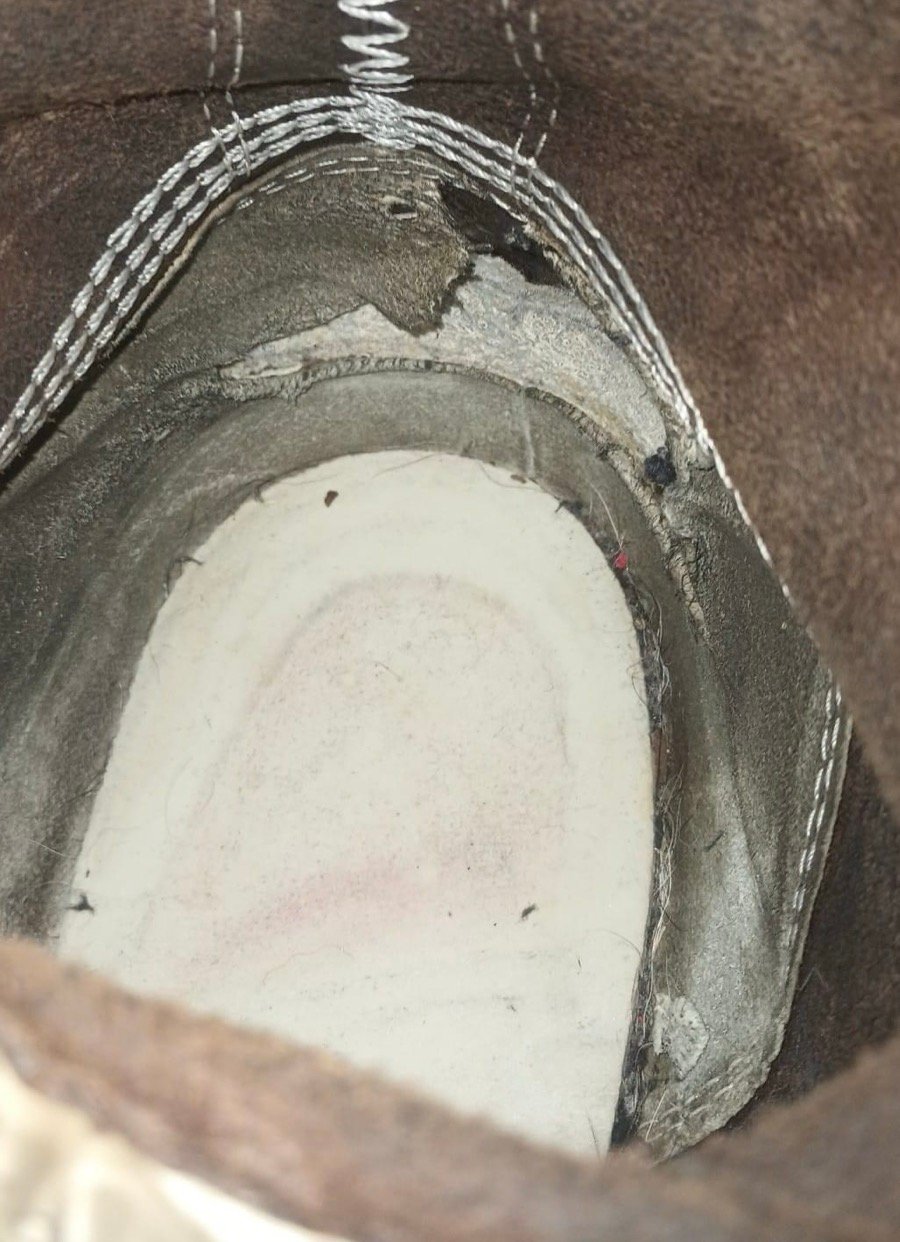
Heel Counter
The heel counter on these is a thick piece of fiberboard, which feels much harder and more robust than the cellulose heel counter on Thorogoods. It feels much more like the heel counter in my Red Wing boots.
One thing I really like is that the Lumberjack has an external counter cover rather than an internal cover. Similar to my JK boots, this external design is much more robust than an internal cover. Even if an internal cover is made of leather, you still have stitching around it, which can eventually wear out, causing the counter cover to fall off. Sometimes, synthetic and leather internal counter covers can fall apart, which pretty much ruins the boots.
Weight
They are average weight for a steel toe boot: coming in at 2lbs 4.2oz. While they aren’t the lightest safety-toe boots I’ve worn, they are far from the heaviest boots and are light enough not to notice the weight.
Silverado Lumberjack Safety Features
- ASTM-compliant Steel Saftey Toe
- ASTM-rated soles for electrical hazards
- Slip-resistant soles
This is probably the part most of us in trade work care the least about, but I still need to cover it.
The Silverado Lumberjack has an ASTM-compliant steel safety toe, which is shaped pretty well and doesn’t dig into my big toes. It’s one of the better-shaped safety toes I’ve used. Beyond that, they are also ASTM-rated for electrical hazards, and they are slip-resistant.
Also note that the Lumberjack is also available in a soft-toe version that’s also electrical, hazard-rated, and slip-resistant configuration.

Are the Silverback Lumberjack Comfortable?
- Modern, sneaker-like feel
In terms of comfort and feel, the best way to describe the Silverado Lumberjack is “squish city.”
Combining the polyurethane comfort insoles with the poron foam on the lasting board makes the boots feel very soft and pillow-like underfoot — more like super comfortable athletic shoes in terms of feel than work boots.
It’s really a matter of personal preference. I like the feel of the leather insoles, but I didn’t mind the soft sneaker-like feel of the Lumberjack. If you prefer a more modern sneaker-like feel, the Lumberjacks definitely offer what you want.
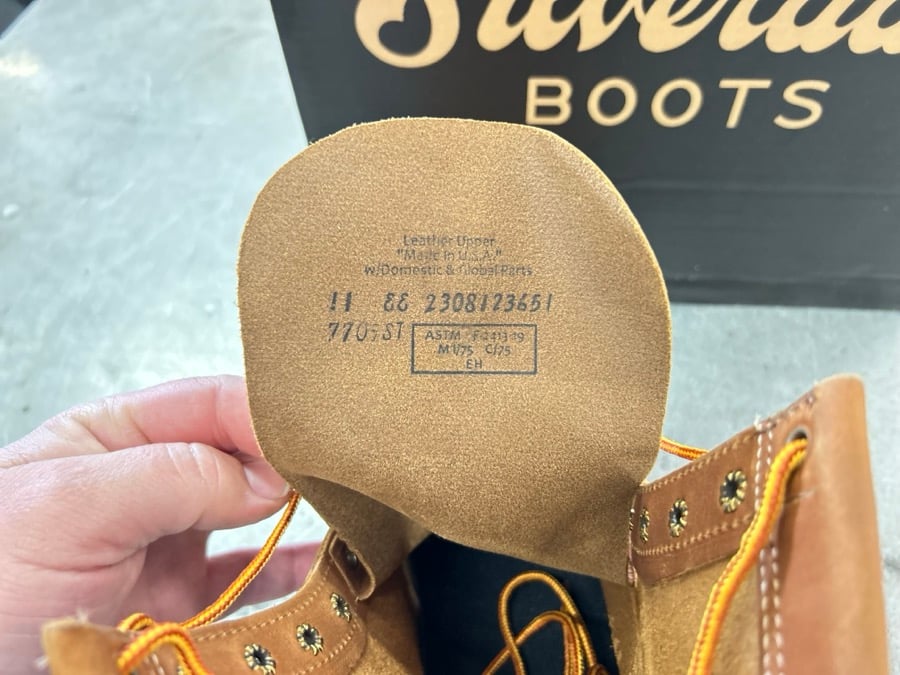
Sizing and Fit
- Size down a half size
- Sized up a width for thick socks
Silverado recommends going down a half size from your Brannock size. For reference, I’m an 11.5 on a Brannock device and a size 12 in most of my sneakers/athletic shoes.
In the Silverado, I’m a size 11. I did, however, go up a width from D to EE, and the boots feel great. I did this partially because I like to wear thick wool socks with my work boots. Also, I wasn’t sure if their safety toe was a narrower cap and wanted to avoid having my toes feel cramped or the safety toe rubbing on the side of my big toe.
Combing a Goodyear welt construction with modern materials like poron, EVA foam, Silverado Boots are a good balance of modern and traditional work boots.
Are the Silverado Lumberjacks Worth It?
- About $240
I think the price is pretty good for what you’re getting with the Silverado Lumberjack. You can find the boots online and at Boot Barn priced between $220 and $240, which is a pretty good deal for a USA-made boot with US-sourced leather and a Vibram outsole.
Now, I will say that the steel toe model I got is $143.50 at Boot Barn. Why Boot Barn sells them so low when the soft-toe version is priced at $234 is beyond me. But $143.50 for this boot is an absolute steal.
In terms of its competition, the Silverados are around the same price as the lower-tier foreign-made Red Wing work boots and anywhere from $20-$60 less than Thorogood’s various USA-made styles. Note that Thorogoods also have synthetic welts.
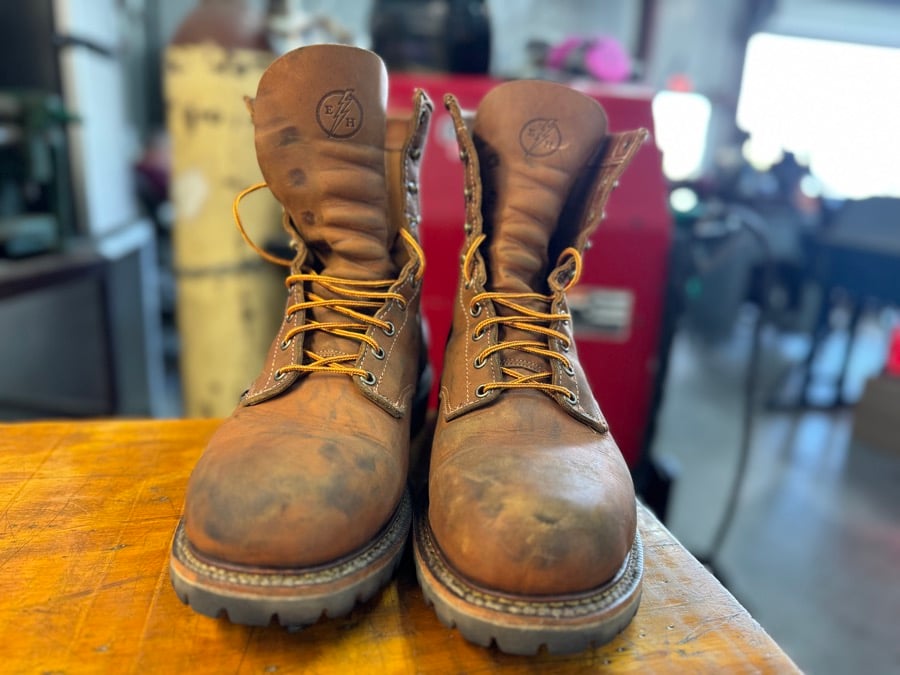
Final Thoughts: Silverado Boots Review
So, do I think the Silverado Lumberjack punches above its weight? To a certain extent, I think they do. They are just as well built as most Red Wing work boots and Thorogoods. They use quality leather from one of the most reputable tanneries in the US, high-quality outsoles, and one of the most durable construction techniques you can use when making boots.
While they are far from the quality of JK, White’s, and Nick’s quality, they’re not priced like them either. I think the Silverados are just as good, if not slightly better, than some of the top contenders in the $200-$300 boot range. The main potential downsides are the synthetic welt makes them harder to resole, and they’re not waterproof.
But even when synthetic, a Goodyear welt is more durable and less likely to delaminate than cheaper boots. I suggest grabbing a leather insole from Dale’s Leather Works or Springfield Leather Co. and replacing the removable cushioned insole with a leather one.
This way, you get the best of both worlds: the custom fit of a broken-in leather insole and the shock absorption of the Poron foam and rubber layer inside the boots. I already had a pair of leather insoles for a different pair of boots that just happened to fit the Silverados, and I really liked the way the Silverados felt with the leather insoles.

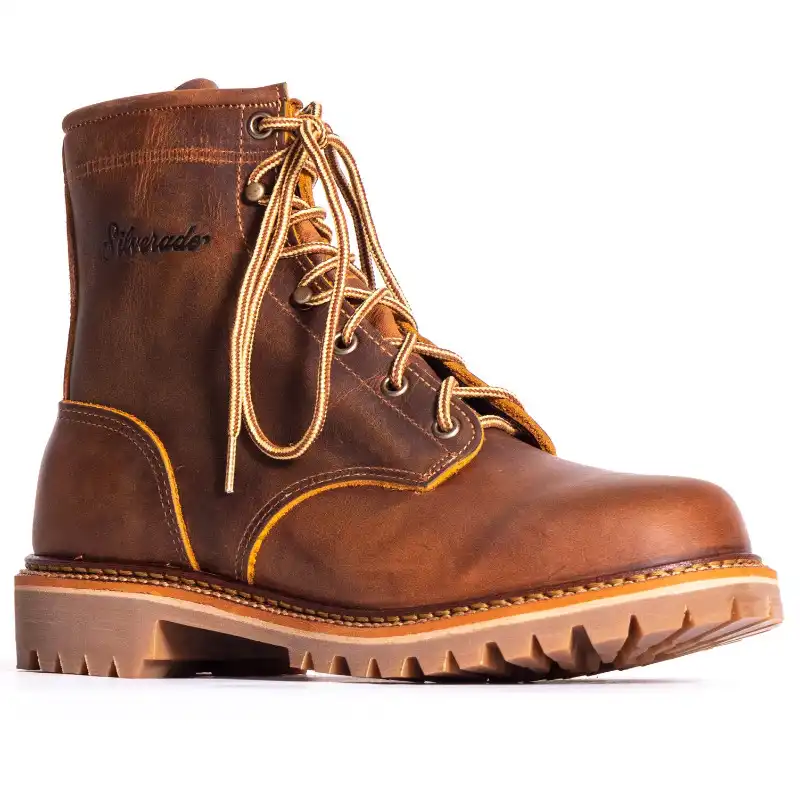

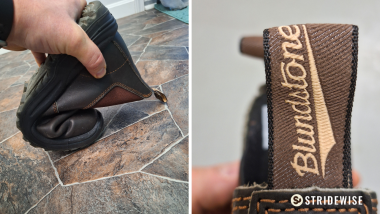
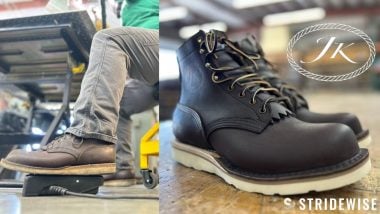

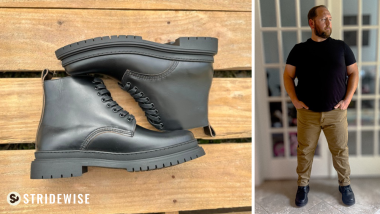

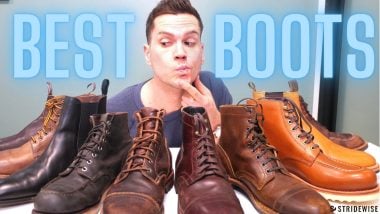
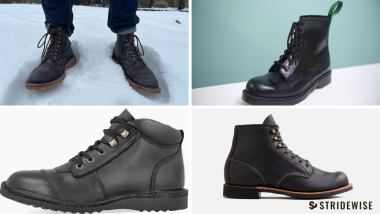


Join the Discussion